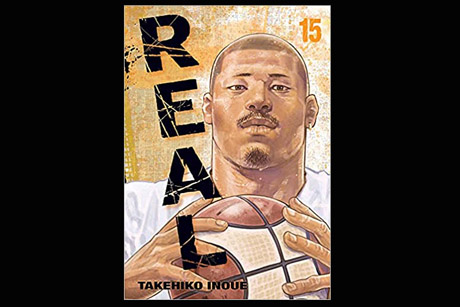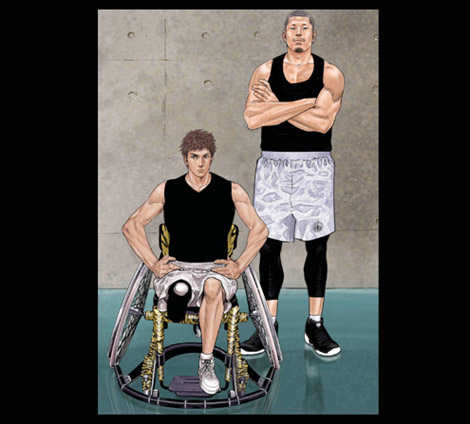
After a hiatus of more than six years, Takehiko Inoue has returned to “Real,” his compelling manga about wheelchair basketball players. (At the same time, he’s directing a new feature based on his hit “Slam Dunk.”) The artist picks up the story where he left off in 2014: His three main characters are still wrestling with physical challenges and equally debilitating psychological ones.
Kiyoharu Togawa was one the top young sprinters in Japan—until his right leg had to be partially amputated due to osteosarcoma. Hisanobu Takahashi, the arrogant captain of the Nishi High basketball team, rode a bicycle into the path of a dump trunk. He woke up in the hospital a week later with no feeling below his waist. Takashi’s former teammate, Tomomi Nomiya gave a girl a ride on his motorcycle; when she was injured in an accident, his life fell apart.

Togawa was the first to discover wheelchair basketball, and he’s attempting to channel his ferociously competitive spirit into the sport. The talented young athlete has established his position as one of the leaders of his team, the Tigers. But he still sees himself as an individual, vying for points and position. Basketball is a team sport. Togawa has to learn to encourage new and less talented players and to help the team function as a unit.
Togawa is making progress, but it’s not easy for him. He’s still dealing with the death of his mother. When he sees a girl he likes who’s home from London, he confesses he’s found a new goal: winning gold at the Paralympics. He asks her to wait for him.
Wheelchair basketball teams are balanced according the extent of the players’ disabilities. Takahashi’s spine was so badly damaged, he’s ranked in the lowest category—a bitter realization for the former ace. He’s trained like a maniac to build the upper body strength needed to propel the chair that has become his legs. The leader of the Warriors team commends his initiative. But Takahashi’s so afraid of tipping over in his chair when he tries to catch a pass or shoot, he ducks out of practice.
Although he suffered no physical injuries, Nomiya is wracked by remorse. He dreamed of playing professional basketball, but quit the sport. He’s gained weight, developed a gut and lost muscle tone, but he can’t accept the absence of basketball in his life. He helped manage some of the wheelchair teams, but drifted away from it. When some kids see him practicing on a public court, they mock him as a lardass. Nomiya beats them up—and spends three days in jail.

Inoue’s dynamic drawings reflect his knowledge of this intense, demanding sport. In an interview, he said, “I’ve participated in wheelchair basketball practices and camps, and I’ve been given the opportunity to actually play the game. I have frequent contact with a number of players, whom I go to when I have questions.”
His draftsmanship eclipses most other graphic novelists. His figures are solid, dimensional and display an impressive understanding of anatomy. The action scenes capture the excitement of the real games, and Inoue conveys nuances of emotion through his characters’ expressions. When Nomiya faces a younger version of himself, the reader can see how the hopeful boy’s features developed into the disillusioned man’s.
When “Real” won the Excellence Award for manga at the 2001 Japan Media Arts Festival, the members of the Adjudication Committee said they could hardly wait to read the next installments and had to content themselves with awarding it the prize. Twenty years later, the Committee’s sentiments still describe this exceptional manga.
Real Volume 15
By Takehiko Inoue
Viz: $12.99, 228 pp., paperback
- Charles Solomon’s Animation Year End Review 2023 - December 28, 2023
- INTERVIEW: Makoto Shinkai on “Suzume” - November 27, 2023
- Interesting Portrayals of Gay Men in Manga/Anime - June 12, 2023


 January 8th, 2022
January 8th, 2022  Charles Solomon
Charles Solomon  Posted in
Posted in  Tags:
Tags: 






